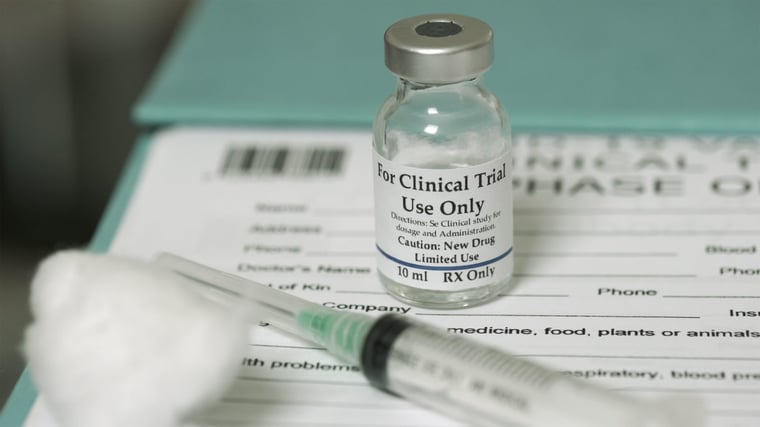
Women’s health: data bias in healthcare
March 2022
By Marta Uncio Ribera, Biomedical Engineer at 42T
What is women’s health?
Women’s health is a term that is often misunderstood - it does not only cover female specific conditions and diseases, like periods, pregnancy, or ovarian cancer. It encompasses a much broader spectrum and can include conditions that disproportionately or more severely affect women and ones that have different symptoms, outcomes or treatment options and efficacies.
Although women make up nearly 50% of the world’s population [1], women’s health issues are often still considered niche. As Caroline Criado Perez said in her book ‘Invisible Women: Exposing Data Bias in a World Designed for Men’, women are being overlooked by healthcare systems ”leaving them misunderstood, mistreated and misdiagnosed”.
Why is there a data bias?
This bias against women in healthcare stems from three main issues:
- Reduced participation of women in clinical research
- Reduced funding of conditions predominantly affecting women
- The lack of disaggregation of data by sex and gender
Exclusion from research

For decades, women were systematically excluded from biomedical research. From 1977 until 1993 the FDA guidance explicitly excluded women of “child-bearing potential” from phase I and II clinical trials [2]. And although in 1989 it became National Institute of Health (NIH) policy to include women in clinical research, it wasn’t until 1993 that it became Federal law [3]. This underrepresentation of women in clinical studies has led to a significant data gap and we therefore have a much more limited understanding of the female body compared to the male body [4]. Even cell and animal studies were performed predominantly on male subjects [5], and as a result, women are much more likely to experience a drug adverse reaction [6].
The rationale was that female hormonal fluctuations increased complexity and performing research on women of childbearing age introduced medical and liability concerns [5]. The problem was that the results from all these clinical studies performed mostly in male subjects were then extrapolated to females. After justifying their exclusion due to differences in hormonal cycles, it was assumed that medical treatments would work equally in male and female bodies. Isn’t this a contradiction?
Lack of funding
There has also been a considerable lack in research funding for women’s health issues. A UK Health Research analysis report showed that only 2.5% of public funding went towards reproductive health [7], whilst 31% of women experience severe reproductive health problems according to a Public Health England (PHE) report [8]. It is also concerning that less than half sought help, regardless of the severity of the symptoms [8]. A recent study into NIH funding and disease burden also found that between 2015 and 2019 a disproportionate share of resources went towards diseases that affect primarily men, at the expense of those affecting mostly women [9].
No sex- and gender-disaggregated data
Even if the participation of women in clinical studies has increased significantly in recent years, the data still fails to be sex- and gender-disaggregated. Sex- and gender-disaggregating data involves collecting, analysing and reporting sex and gender specific data in order to investigate potential differences and similarities. According to a WHO report on women’s health and wellbeing in Europe published in 2016, disaggregation of data “remains a challenge at country and regional levels” [10]. It is also the top priority of the CDRH Health of Women Strategic Plan of 2022 [11].
Consequences of the data bias
Research has repeatedly shown that sex is a principal biological variable [4] which can influence disease epidemiology, manifestation, diagnosis, treatment, and outcomes [12]. The lack of data or awareness about these potential differences can lead to misdiagnoses, adverse drug reactions and ineffective, unsuitable or dangerous medical devices.
There are numerous diseases where sex and gender differences have been shown to be significant. Heart attacks are one of the most notable examples. But it is not the only one. It affects the diagnosis and treatment of many other conditions such as strokes, endometriosis, or pain. It also impacts the effectiveness of medical devices like implantable defibrillators, hip implants, PPE or AI driven systems.
Heart attacks and strokes

When imagining a heart attack patient, most people will probably picture a late-middle aged man experiencing a sharp chest pain. Cardiovascular disease is often considered a men’s health issue, but it is the leading cause of mortality for women in Europe [10]. Women are more likely to experience other symptoms such as shortness of breath, nausea, vomiting and back or jaw pain. So, they’re 50% more likely to be initially diagnosed incorrectly [13]. In both men and women, an initial misdiagnosis increases the risk of death by 70% [13].
Women are also around 30% more likely to be misdiagnosed and sent home when having a stroke [14]. Even if this disparity of symptoms is now known, a lack of awareness from both medical staff and patients means that misdiagnoses continue to occur.
Endometriosis and pain

The lack of knowledge surrounding female specific conditions and diseases is also astounding. For example, the effect that conditions like heavy-menstrual bleeding, endometriosis, pregnancy-related issues and menopause can have on workforce productivity is very poorly understood [5].
In the case of endometriosis, it takes women on average 7-8 years to be diagnosed [5]. Endometriosis, which affects 10% of women of reproductive age [14], is a condition in which tissue similar to the uterus lining tissue grows in regions where it shouldn’t do - like the ovaries or fallopian tubes. It can lead to significant pain and fertility issues, but 90% of patients reported people are “dismissive or even disbelieving” of their symptoms on a monthly basis [15].
Women feeling ignored and misunderstood is not limited to female specific conditions though. They often struggle to get their pain taken seriously (14) and are half as likely to be given painkillers post-surgery [5]. They are more likely to be prescribed sedatives than pain medication [16].
Implantable defibrillators
Being female is also a risk factor during primary pacemaker implantation, independent of age or the device type [17]. In the case of cardiac resynchronisation therapy devices (CRT-D), this is not surprising given that women made up only around 20% of trial participants [18]. CRT-D are implantable defibrillators that correct the irregular heart rhythms in patients with heart failure.
The FDA guidelines recommended their use for patients with a QRS complex (the electrical impulse that starts just before ventricular contraction) over 150ms [18]. This worked for men, but it has since been found that women with a QRS complex between 130 and 149ms benefited from a CRT-D more than men and experienced a 76% reduction in heart failure or death [18].
Hip implants
Another example of a medical device that has an increased risk of failure in women is metal-on-metal hip resurfacing implants. Women have a much higher risk of adverse local tissue reaction, dislocation and aseptic loosening, as well as being more likely to need a surgical revision [19]. Hip implants are gender neutral and although they come in a range of sizes, they don’t necessarily consider biomechanical differences between male and female bodies. Kinematic differences can cause increased edge-loading risk in females, for example when standing up from sitting [20].
Edge loading increases wear in metal-on-metal hip arthroplasties [20] which produces metal debris and can cause inflammatory reactions. Hip arthroplasty implants undergo preclinical wear testing following standards like ISO 14242. But these standards don’t always accurately represent in vivo loading conditions, as there is a large variability in the daily forces experienced at the hip particularly between males and females [21].
PPE

The COVID-19 pandemic has highlighted the importance of having adequately fitting PPE, as protecting healthcare staff is vital to keep healthcare systems running in times of need. In 2018 77% of NHS staff were women [22], but as the chair of the BMA Junior Doctors Committee told Refinery 29, a lot of PPE has been designed to fit “a default European male” [23]. Making something smaller does not automatically mean it will fit female bodies, which have different face and body shapes.
Although anthropometric data does not provide an anatomically complete picture, it does exist for men and women from around the world – so the data is available [24]. This is another case where standards are lagging and need to be updated. Ill-fitting PPE can have reduced effectiveness and could potentially put thousands of frontline healthcare staff unnecessarily at risk.
AI
With the increased adoption of artificial intelligence (AI) in the medical field in recent years, the lack of sex- and gender-disaggregated data poses a significant risk. The usefulness and effectiveness of any AI system heavily relies on the quality of the data it has been trained on. Any flaws or biases in these data sets will just be amplified. In addition to biases in the data, only 22% of professionals in the AI and data science fields are women [25]. The combination of these two factors could very easily perpetuate and exacerbate the already existing bias in healthcare.
Is anything being done about it?
Although the progress is not as fast as it should be, more and more countries and organisations have acknowledged the existence and consequences of this bias. For example, the CDRH Health of Women Program was founded in 2016 to “promote and protect the health of all women”. And their primary objective in 2022 is to “improve the availability, analysis and communication of sex- and gender-specific data collection” [11].
The WHO European Region 2016 strategy on women’s health also highlighted the importance of using disaggregated data to inform policy making [26] and England’s first ever women’s health strategy will be published in 2022 [27]. On top of this, the US, Canada and the UK have very recently published some guiding principles for Good Machine Learning Practice for Medical Device Development [26].
What can we do about it?
As engineers, designers, and product developers, we should always design for the intended user. Trial participants and the data used to inform the device design should be representative of the intended patient population. Device testing should also demonstrate performance in realistic and clinically relevant settings. When analysing test or trial results, data should always be disaggregated to look out for differences across patient and user groups that might have been missed in the design process. This doesn’t mean just dividing the population into male and female, biases exist across the board – gender, race, age, economic background, sexual orientation – and they can all impact device performance. Disaggregation of data is about taking everyone into account.
As a result of the bias against women in healthcare, the women’s health sector has been severely underfunded. The lack of research into conditions that predominantly affect women means that there is a huge space for innovation, which could impact the lives of nearly 50% of the population. For those needing some financial incentives to be persuaded, the women’s health market size is projected to reach over 42 billion USD by 2027 [28].
For example, the global breast pump market size was valued at 2.51 billion USD in 2020 and is expected to grow significantly [29]. In the US, current doctors’ recommendations are to breastfeed for 6 months. And with increasing numbers of women in the workforce and no paid maternity leave, many women will both need and want a breast pump.
There is every reason to invest in women’s health, disaggregate data and #BreakTheBias.
References
- https://ourworldindata.org/gender-ratio#:~:text=The%20sex%20ratio%20%E2%80%93%20the%20share,in%20the%20world%20was%2049.6%25.
- https://www.fda.gov/science-research/womens-health-research/regulations-guidance-and-reports-related-womens-health
- https://orwh.od.nih.gov/toolkit/recruitment/history#:~:text=Between%201989%20and%201993%2C%20inclusion,as%20Subjects%20in%20Clinical%20Research.
- Sandberg K, Umans JG, Georgetown Consensus Conference Work G. Recommendations concerning the new U.S. National Institutes of Health initiative to balance the sex of cells and animals in preclinical research. FASEB journal : official publication of the Federation of American Societies for Experimental Biology. 2015;29(5):1646-1652.
- https://lordslibrary.parliament.uk/womens-health-outcomes-is-there-a-gender-gap/
- Tharpe N. Adverse drug reactions in women's health care. Journal of midwifery & women's health. 2011;56(3):205-213.
- https://www.ukcrc.org/wp-content/uploads/2015/08/UKCRCHealthResearchAnalysis2014-WEB.pdf
- https://www.gov.uk/government/news/survey-reveals-women-experience-severe-reproductive-health-issues
- Arthur A. Mirin.Journal of Women's Health.Jul 2021.956-963. http://doi.org/10.1089/jwh.2020.8682
- https://apps.who.int/iris/bitstream/handle/10665/332324/9789289051910-eng.pd
- https://www.fda.gov/media/155461/download
- McGregor AJ, Barr H, Greenberg MR, et al. Gender-specific Regulatory Challenges to Product Approval: a panel discussion. Acad Emerg Med. 2014;21(12):1334-1338.
- https://www.bhf.org.uk/what-we-do/news-from-the-bhf/news-archive/2019/september/heart-attack-gender-gap-is-costing-womens-lives
- https://www.webmd.com/women/news/20180607/why-women-are-getting-misdiagnosed
- https://www.allianceforendo.com/
- https://www.health.harvard.edu/blog/women-and-pain-disparities-in-experience-and-treatment-2017100912562
- Bernd Nowak, Björn Misselwitz, A. Erdogan, R. Funck, W. Irnich, C.W. Israel, H.-G. Olbrich, H. Schmidt, J. Sperzel, M. Zegelman, on behalf of the expert committee ‘Pacemaker’, Institute of Quality Assurance Hessen, Do gender differences exist in pacemaker implantation?—results of an obligatory external quality control program, EP Europace, Volume 12, Issue 2, February 2010, Pages 210–215, https://doi.org/10.1093/europace/eup312
- Zusterzeel R, Selzman KA, Sanders WE, et al. Cardiac resynchronization therapy in women: US Food and Drug Administration meta-analysis of patient-level data. JAMA Intern Med. 2014;174(8):1340-1348. doi:10.1001/jamainternmed.2014.2717
- Haughom BD, Erickson BJ, Hellman MD, Jacobs JJ. Do Complication Rates Differ by Gender After Metal-on-metal Hip Resurfacing Arthroplasty? A Systematic Review. Clin Orthop Relat Res. 2015;473(8):2521-2529.
- Mellon SJ, Grammatopoulos G, Andersen MS, et al. Individual motion patterns during gait and sit-to-stand contribute to edge-loading risk in metal-on-metal hip resurfacing. Proceedings of the Institution of Mechanical Engineers, Part H: Journal of Engineering in Medicine. 2013;227(7):799-810. doi:10.1177/0954411913483639
- Lunn DE, De Pieri E, Chapman GJ, Lund ME, Redmond AC, Ferguson SJ. Current Preclinical Testing of New Hip Arthroplasty Technologies Does Not Reflect Real-World Loadings: Capturing Patient-Specific and Activity-Related Variation in Hip Contact Forces. J Arthroplasty. 2020;35(3):877-885. doi:10.1016/j.arth.2019.10.006
- https://www.nhsemployers.org/articles/gender-nhs-infographic
- https://www.refinery29.com/en-gb/women-ppe-risk-coronavirus
- https://www.bsigroup.com/globalassets/documents/ppe/diversity-in-ppe-whitepaper.pdf
- https://www.turing.ac.uk/sites/default/files/2021-03/where-are-the-women_public-policy_full-report.pdf
- https://www.euro.who.int/__data/assets/pdf_file/0003/333912/strategy-womens-health-en.pdf
- https://www.gov.uk/government/publications/our-vision-for-the-womens-health-strategy-for-england
- http://www.globenewswire.com/news-release/2021/12/09/2348936/0/en/Global-Women-Health-Market-Size-2021-2028-is-Projected-to-Reach-USD-41-05-Billion-by-2027-Exhibiting-a-CAGR-of-3-2.html
- https://www.grandviewresearch.com/industry-analysis/breast-pumps-market#:~:text=The%20global%20breast%20pump%20market%20size%20was%20estimated%20at%20USD,USD%202.74%20billion%20in%202021.

If you would like to find out more please contact Marta:
answers@42T.com | +44 (0)1480 302700 | www.linkedin.com/in/martauncioribera
Marta is a biomedical engineer with a mechanical background. Along with a wide set of technical skills, she has experience in medical device R&D. Marta graduated with Distinction from the Biomedical Engineering MSc at Imperial College London, specialising in biomechanics, and holds a mechanical engineering degree from the University of Cambridge.
Share this article:
Related Articles

Healthcare & Life Sciences
The future of home healthcare: trends and innovation

Healthcare & Life Sciences
Right to repair: reshaping the medical equipment industry

Healthcare & Life Sciences
The hidden risks with smart injectors - is high-tech sacrificing usability?

What will you ask us today?
We believe in asking the right questions to drive innovation; when we know the right questions, we generate the ideas to answer them.

